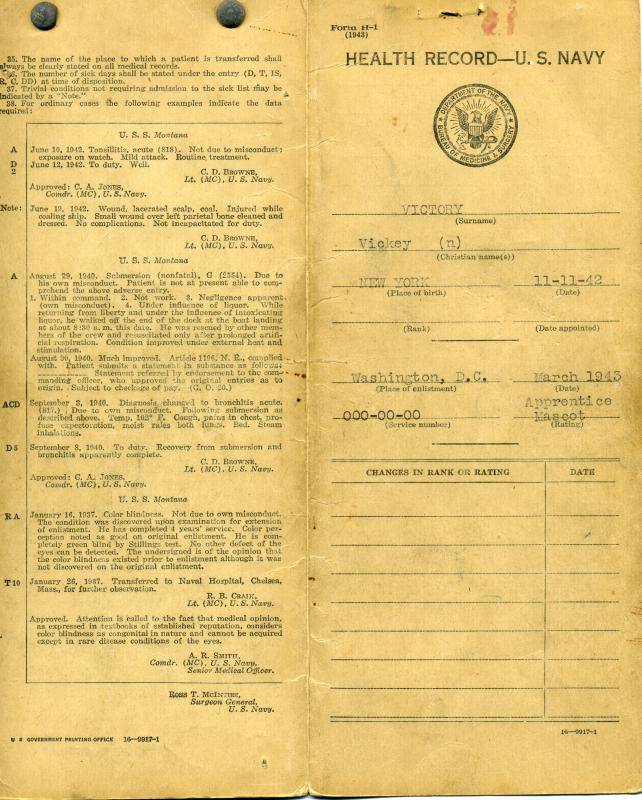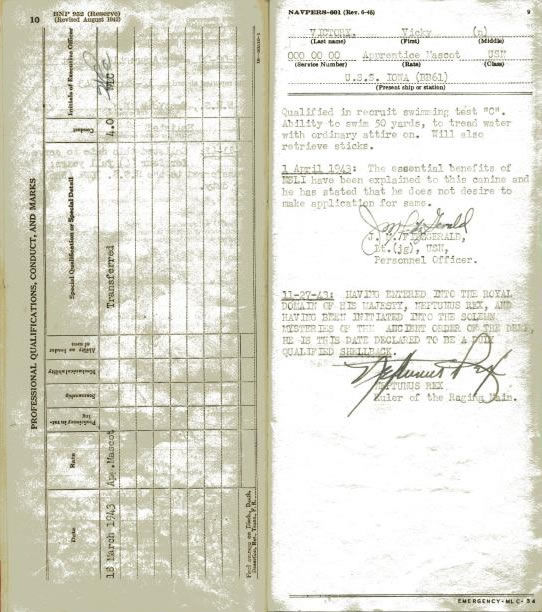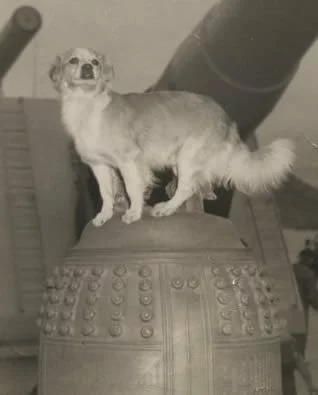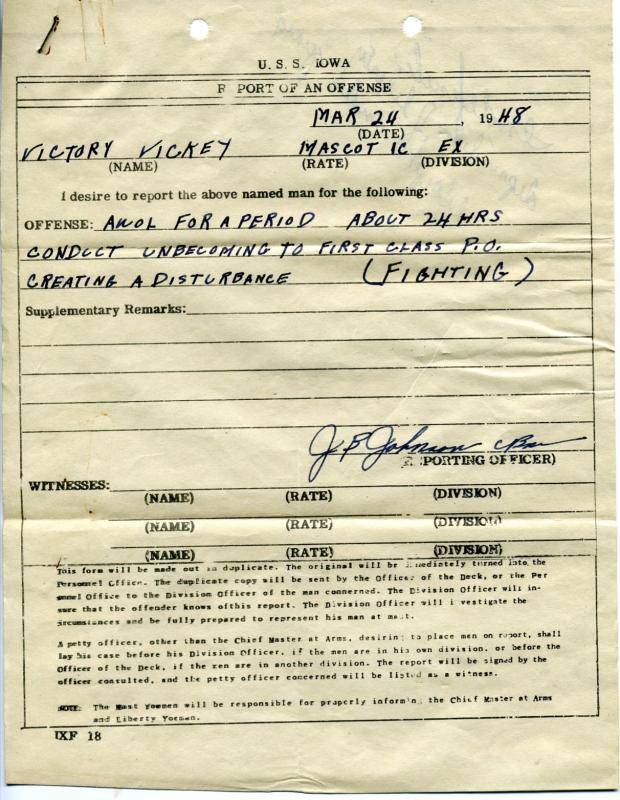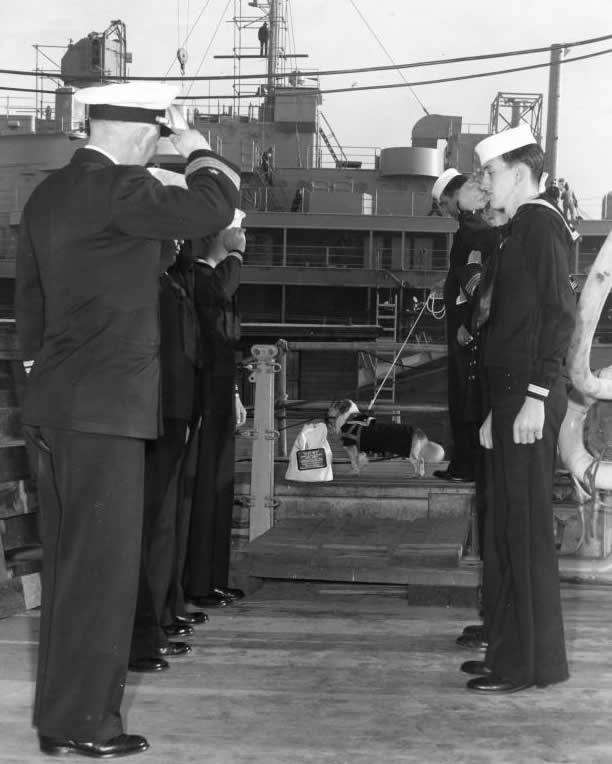 Mascot: Vicky the Dog
Mascot: Vicky the Dog
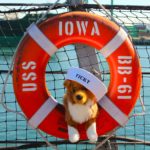 |
 |
 |
 |
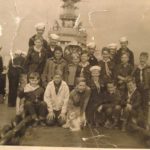 |
 |
LEARN ABOUT OUR MASCOT, VICKY THE DOG
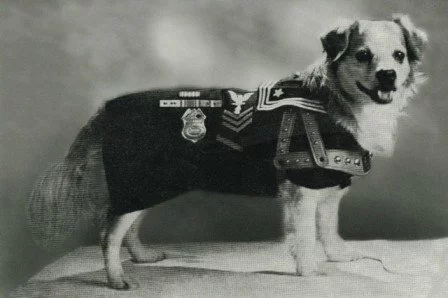
While Roosevelt’s party met with Winston Churchill and Joseph Stalin in Tehran, Vicky and the Iowa took a quick trip from North Africa to Brazil and crossed the equator. Like all sailors, Vicky went through the tough initiation ceremony to become a Shellback. An entry in Vicky’s personnel record dated 27 November 1943 and signed by Neptunus Rex, Ruler of the Raging Main, declared Vicky to be a duly qualified Shellback.
It is thought that Vicky probably missed her old friend & master Captain (now Vice Admiral) McCrea. On 30 January 1949, Mascot First Class Victory, in his blue uniform along with his sea bag, was piped over the side of the decommissioned USS Iowa in Hunter’s Point and transferred to the destroyer USS Rupertus. He was to rejoin his old master, now headquartered in Hawaii, as an aide. A citation was read:
As a member of the crew of the USS Iowa, you have through your devotion to duty ——– maintained a high moral standing toward your shipmates.


